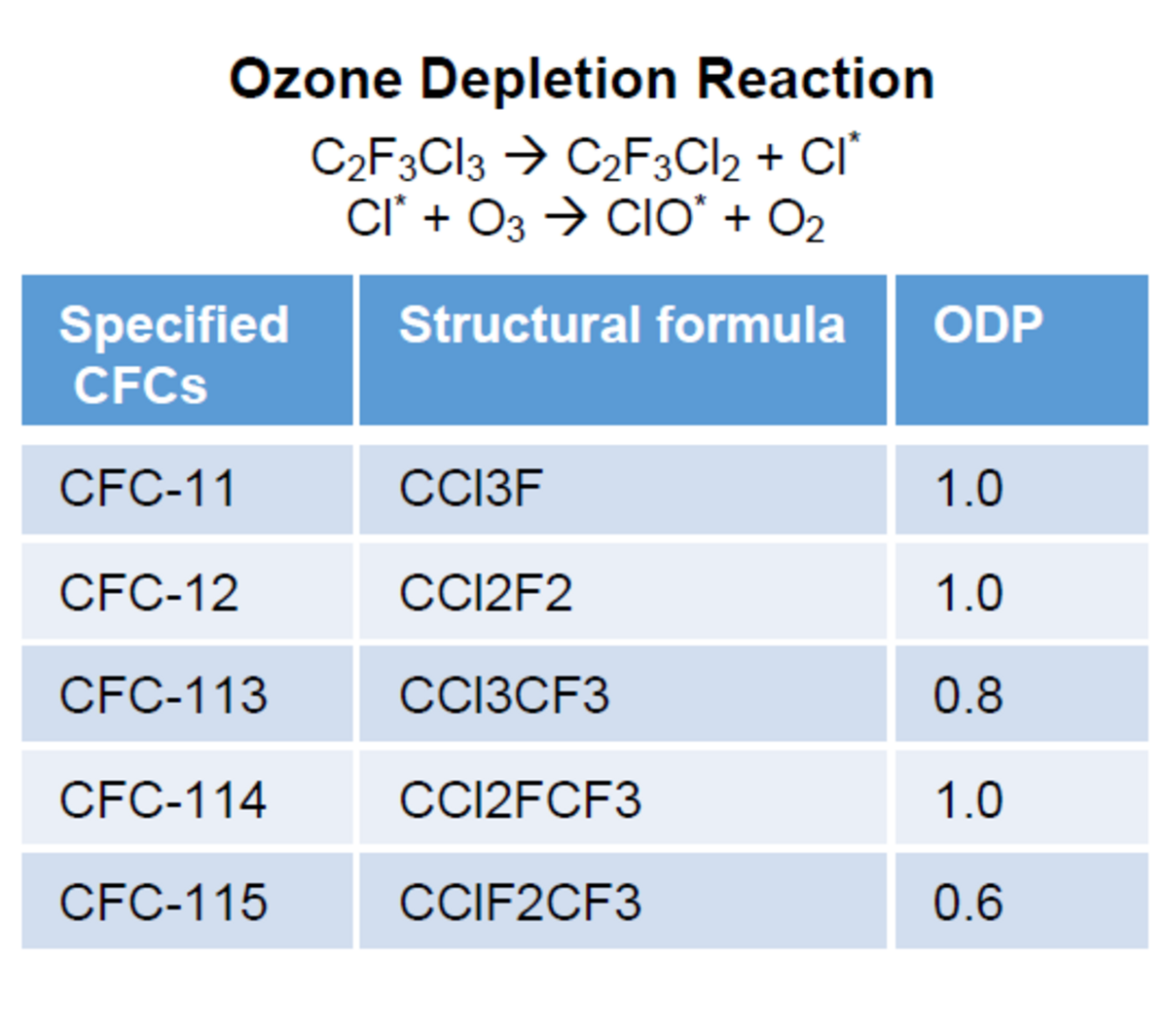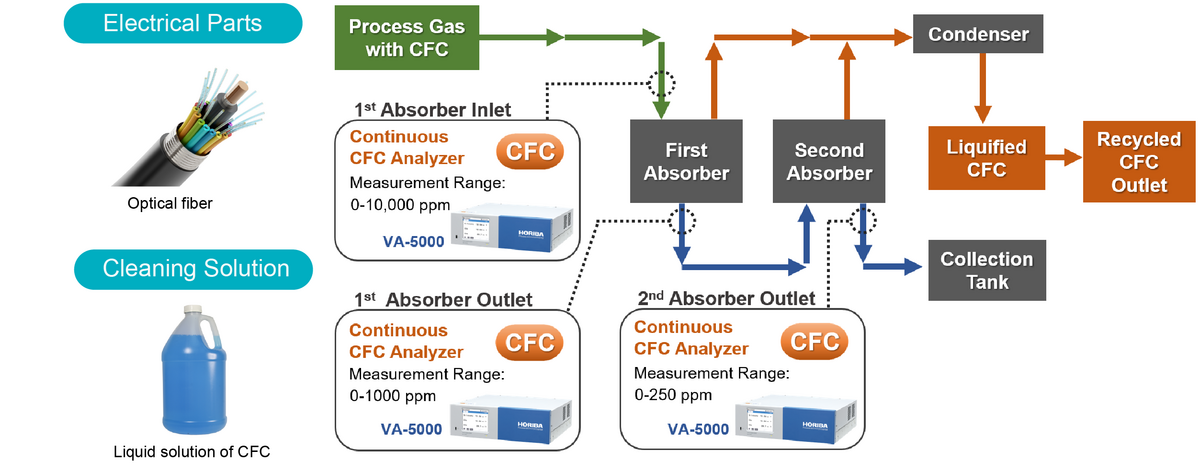
Ozone Depletion Reaction
CFCs, short for chlorofluorocarbons, are man-made compounds that consist of carbon, chlorine, and fluorine atoms. They were widely used in various industrial and consumer applications, including refrigerants, aerosol propellants, solvents, and foam-blowing agents. CFCs gained popularity due to their stability, non-toxic nature, and low flammability. One particular CFC, known as CFC-113, was extensively utilized in the past and recognized as one of the specified chlorofluorocarbons.
Unfortunately, the use of CFCs has been significantly reduced and prohibited in many countries due to their destructive impact on the ozone layer, referred to as Ozone Depletion Potential (ODP). When CFCs are released into the atmosphere, they can reach the stratosphere where they are broken down by ultraviolet (UV) radiation, releasing chlorine atoms. These chlorine atoms then act as catalysts in destroying ozone molecules, resulting in the thinning of the ozone layer.
As a result, there is a need for environmental monitoring and efficient control of the recycling process to minimize the environmental impact of CFCs. To effectively manage recycling facilities, there is a demand for sensitive and accurate continuous analyzers to monitor the concentration of CFCs. However, such analyzers are rare and often not readily available.
* Customization on request
CFC Analyzer VA-5000 Series
Stable real-time measurement with high sensitivity
(Measurement range: max. 0-100 vol%, min 0-100 ppm)
On demand can be customized to the requested type of CFC
There are different types of CFCs such as CFC-114, CFC-115 etc. We provide analyzers customized according to the CFC type you want to measure. Please contact us for details.
CFC-113 is one of the three most popular CFCâs along with CFC-112, CFC-11, CFC-12 used as a cleaner for delicate electrical parts and components such as optical fiber. After the use, there are several types of CFC recovery methods available. One of the methods uses activated carbon. When the amount of adsorbed CFC reaches saturation, the activated carbon is heated to desorb CFCs, and the desorbed gas is condensed and liquefied.
*Images are for illustrative purposes only
MÃĄy phÃĒn tÃch khà Äa thà nh phᚧn
Bᚥn cÃģ thášŊc mášŊc hoáš·c yÊu cᚧu nà o khÃīng? HÃĢy sáŧ dáŧĨng mášŦu nà y Äáŧ liÊn háŧ váŧi cÃĄc chuyÊn gia cáŧ§a chÚng tÃīi.


